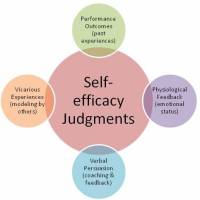 In terms of the ‘Big 4’ the focus on this blog over the last few weeks seems to have been on feedback – and rightly so.
In terms of the ‘Big 4’ the focus on this blog over the last few weeks seems to have been on feedback – and rightly so.
The other day I came across an article by ‘Ron Berger’ entitled ‘Fostering an ethic of excellence’. This article is a very brief summary of his book ‘An Ethic of Excellence’. This made me think firstly, I must buy the book (now ordered from here) and secondly, it provides a great framework for thinking about challenge – another of the ‘Big 4’. This extract demonstrates why:
“For 25 years I’ve led a double life. I’m a fulltime classroom teacher in a public school. To make ends meet for my family, I’ve worked during the summers, and sometimes weekends, as a carpenter. In carpentry there is no higher compliment builders give each other than this: That person is a craftsman. This one word says it all. It connotes someone who has integrity, knowledge, dedication, and pride in work —someone who thinks carefully and does things well. I want a classroom full of craftsmen —students whose work is strong, accurate, and beautiful; students who are proud of what they do and respect themselves and others.
In my classroom I have students who come from homes full of books and students whose families own almost no books at all. I have students for whom reading, writing, and math come easily, and students whose brains can’t follow a line of text without reversing words and letters. I have students whose lives are generally easy, and students with physical disabilities and health or family problems that make life a struggle. I want them all to be craftsmen. Some may take a little longer; some may need to use extra strategies and resources. In the end, they need to be proud of their work, and their work needs to be worthy of pride.”
 He then goes on to describe 5 pedagogical principles that are needed in order to develop an ethic of excellence in the classroom. They provide an excellent framework for ensuring challenge in the classroom too:
He then goes on to describe 5 pedagogical principles that are needed in order to develop an ethic of excellence in the classroom. They provide an excellent framework for ensuring challenge in the classroom too:
1. Assign work that matters
Students should be working on topics that challenge and inspire them. This requires the teacher to challenge their thinking and grab their interest. A teacher who is passionate about the subject will go a long way to delivering this – but the teacher needs to know where and how to pitch the level of challenge – ‘High challenge, low stress for all’.
2. Study examples of excellence
Show students examples of excellent work completed by former students – to inspire them and show them the level expected of them. Unpick with them, what makes it excellent. The art department does this brilliantly:
The maths department is also developing this approach well:
3. Build a culture of critique
Plan formal critique sessions, where students may show a piece of work, explaining their ideas and what they were trying to achieve. Students are then encouraged to critique the work, but using the rules that it must be:
- Kind
- Specific
- Helpful
Students should be encouraged to phrase their critique as questions e.g. ‘Have you thought about…..?’ As a result of this feedback from their peers, students improve their work over time. This is demonstrated brilliantly, by this short video:
Although this critique is on a piece of artwork, it’s easy to see how the same principles could be applied to a piece of writing, or a sporting move etc.
4. Require multiple revisions
Don’t accept the first piece of work, or the first draft as the finished article. In fact, when you are presented with it, a good phrase to use is, ‘It’s a good start, but……’
Only accept excellent, high quality work – and insist on it. Even if this means multiple revisions, as a result of feedback.
5. Provide opportunities for public presentation
Once students have produced an excellent piece of work, provide an audience for them to show off their work – to give them a sense of pride. This could be:
- By sharing their work with their classmates
- By sharing their work on the school blog
- Alternatively – set up a class blog
- Setting up an ‘Ethic of Excellence Gallery’ of student work, like this one at Humberstone Academy (thanks to @carljarvis_eos for the picture)
- Inviting other teachers in to see and hear about student work.
- Classroom displays.
So, I would argue very strongly that by using these pedagogical principles to develop an ethic of excellence, you are challenging students to go beyond their best by:
- Showing them what excellence looks like – what are your standards?
- Planning tasks that allow them to demonstrate excellence – and want to be excellent.
- Using feedback to support them with getting to excellent.
- Not accepting anything other than excellent work.
- Celebrating excellence.
“Excellence is the result of caring more than others think is wise, risking more than others think is safe, dreaming more than others think is practical, and expecting more than others think is possible”
Ronnie Oldham
















Reblogged this on The Echo Chamber.
Really thought provoking Thanks Sue
Sent from my iPad
Pingback: Modelling for Excellence | RGS Learning
Pingback: An Ethic of Excellence | Class Teaching | balcattaED